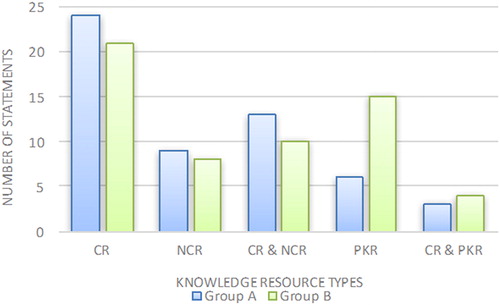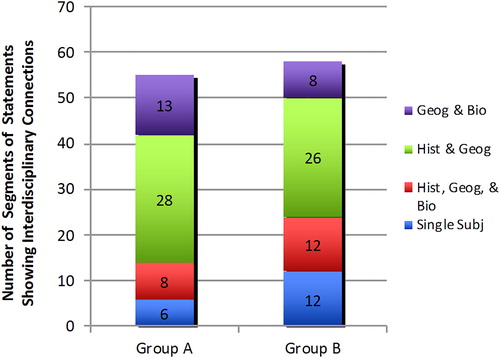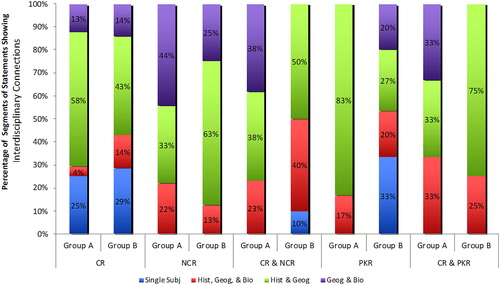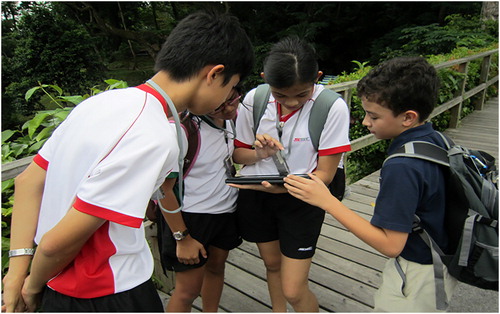Figures & data
Table 1. Overview of the lesson design from pre-to post-outdoor learning trail.
Table 2. Coding categories of knowledge resource dimension (adapted from Fischer & Mandl, Citation2005).
Table 3. Coding categories for integration of interdisciplinary concepts.
Figure 3. Frequency of knowledge resource types used in group discourse.
Note: CR = Contextual Resources, NCR = New Conceptual Resources, CR & NCR = Relations between Contextual Resources and New Conceptual Resources, PKR = Prior Knowledge Resources, CR & PKR = Relations between Contextual Resources & Prior Knowledge Resources.

Figure 4. Frequency of interdisciplinary statements in group discourse.
Note: Geog = Geography, Bio = Biology, Hist = History, Single Subj = Single Subject.

Figure 5. Interdisciplinary thinking in the different types of knowledge resources.
Note: CR = Contextual Resources, NCR = New Conceptual Resources, CR & NCR = Relations between Contextual Resources and New Conceptual Resources, PKR = Prior Knowledge Resources, CR & PKR = Relations between Contextual Resources & Prior Knowledge Resources, Single Subj = Single Subject refers to History or Geography or Biology, Geog = Geography, Bio = Biology, Hist = History.

Table 4. Group B discusses possible reasons for the clean river campaign.


